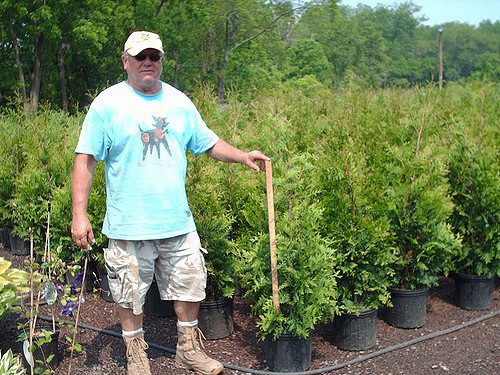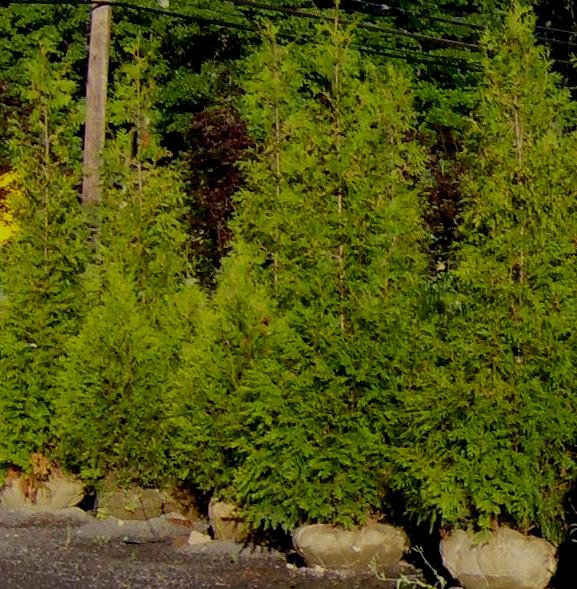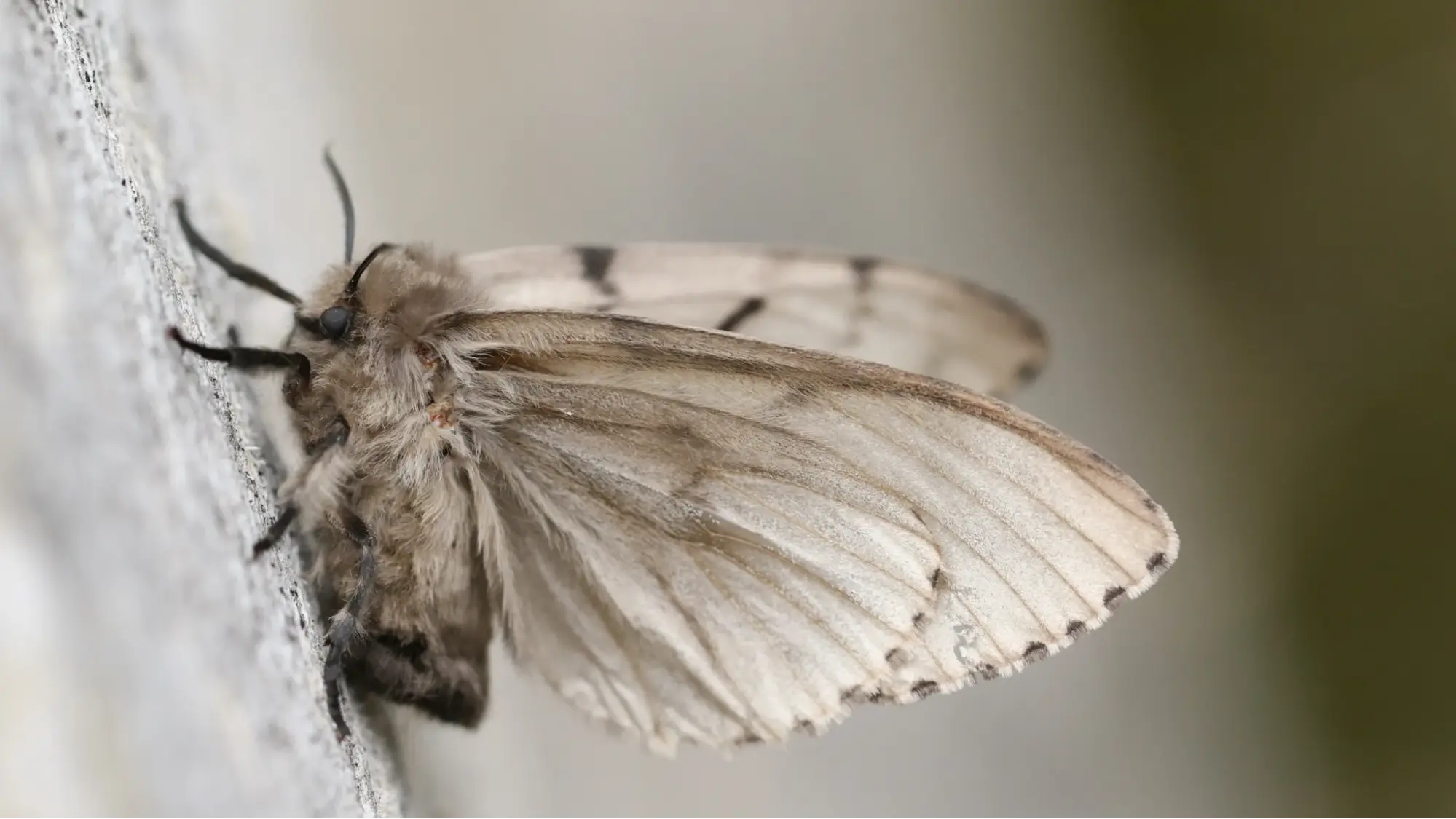Cedar trees are admired for their majestic appearance, aromatic wood, and ability to thrive for hundreds of years — some Eastern Red Cedars in North America can live over 900 years! Proper cedar tree planting and ongoing cedar tree care are essential to ensure these trees grow strong and healthy. From choosing the right location to understanding soil and water needs, knowing how to plant and care for a cedar tree can make a dramatic difference in its growth and longevity.
Planting Cedar Hedges
If you’re planning to grow healthy, strong cedar trees in your yard, knowing when to plant cedar trees is essential. The best time to plant cedar trees in Ontario is during the early spring or early fall, when temperatures are moderate and the soil is workable. Planting during these periods allows the tree to establish its roots before the heat of summer or the cold of winter arrives. By choosing the right timing, you give your cedar the best chance to thrive, grow quickly, and develop a dense, attractive canopy.

Prepare for Planting Cedar Trees
Before you start planting cedar hedges, it’s important to plan ahead and determine how many trees you’ll need. To do this, first measure the total length of the area where your hedge will grow. This measurement helps you calculate the number of cedar trees required for even spacing and healthy growth. The recommended distance between cedar trees is about 75 centimeters, which allows each tree enough room to develop a strong root system and form a dense, uniform hedge over time.
Timing also plays a key role in success. The best time to plant cedar trees is during the early spring or early fall, when the soil is moist and temperatures are mild. If you’re wondering when to plant cedar hedge, choose a period with consistent rainfall and cooler weather — this helps new roots establish easily and reduces transplant stress. Proper preparation and timing will ensure your cedar hedge grows lush, green, and resilient for years to come.

Digging Planting Holes
After measuring and marking the planting area, the next step is to dig the holes for your cedar trees. When planting cedars, the size and depth of each hole are crucial for healthy root development. Each planting hole should be approximately 80 centimeters wide and 40 centimeters deep, which provides enough space for the roots to spread and access nutrients effectively. Understanding how deep to plant cedar trees helps prevent issues like poor drainage or root rot.
Once the holes are ready, gently position each cedar tree in the center. Ensure that the root ball sits level with the surrounding ground — neither too deep nor too shallow. When planting cedar trees, it’s essential to cover all roots completely with soil, pressing it down lightly to remove air pockets while keeping the soil loose enough for water to circulate. Finally, water each tree thoroughly to help the roots settle and begin establishing in their new environment.
Fertilizing
Fertilizing is crucial for growing strong and vibrant cedar trees. If you plant cedar hedges in the spring, it’s also the ideal time to feed them — this ensures they have the nutrients they need for healthy root development and lush new growth. Knowing when to fertilize cedar hedges is important: early spring, just as the soil warms up, is generally the best time. Avoid fertilizing late in the season, as the new growth won’t have time to harden before winter, which can lead to damage from cold weather.
Understanding how to fertilize cedar hedges properly will make a big difference in their long-term health. Use a slow-release, balanced fertilizer such as 20-20-20 or one designed specifically for evergreens. Apply it evenly along the base of each hedge, about 15–20 centimeters away from the trunk, to avoid burning the roots. Lightly water the area after applying fertilizer to help nutrients absorb into the soil. Remember, you shouldn’t fertilize cedar trees planted in the fall, since during that time, the trees naturally slow their growth and focus on preparing for winter dormancy.
You can get a consultation about fertilizing and other tree care services.
Watering
Proper watering is essential for establishing healthy cedar trees and is a critical part of how to care for cedars. When watering cedars after planting, start by soaking the planting hole before adding soil around the roots. This ensures the roots receive enough moisture to settle into the new environment and reduces air pockets that can dry out the roots.
Once the hole is partially filled with soil, water again to help the soil settle firmly around the root ball. Continue to provide consistent moisture for the first few weeks, especially during dry periods, to encourage strong root development. Avoid overwatering, as cedars do not thrive in waterlogged soil, but make sure the root zone remains evenly moist. Regular monitoring and careful watering are key steps in how to care for cedars and ensure they grow strong, healthy, and lush.
Maintaining Cedar Hedges
Proper maintenance is key to keeping cedar hedges healthy, dense, and visually appealing. Regular care helps prevent disease, encourages strong growth, and ensures your hedge forms a uniform, lush barrier. From watering and fertilizing to pruning and pest management, understanding the right techniques makes all the difference in long-term hedge success. With consistent attention, your cedar hedge can remain vibrant and strong for many years.
Fertilizing
Fertilizing is an essential part of your cedar tree maintenance program, supporting strong growth, vibrant foliage, and overall tree health. Knowing when to fertilize cedar trees ensures that your trees receive nutrients at the right time to promote root development and new growth. The best practice is to start fertilizing in early spring, just as the soil begins to warm and the tree comes out of dormancy.
Continue feeding your cedars regularly until July, applying a balanced, slow-release fertilizer to encourage consistent growth throughout the spring and early summer. Avoid fertilizing too late in the season, as this can stimulate new growth that may be vulnerable to frost or winter damage. Understanding when to fertilize cedars and using proper application methods will help your trees stay healthy, resilient, and visually appealing year after year.

Watering
Water plays a vital role in the overall care for cedar trees and cedar bushes, ensuring they remain healthy, vibrant, and resilient. However, moderation is essential — too much water can cause the foliage to lose its rich green color, while too little water can make the leaves dry, brittle, and prone to damage. For newly planted cedars or during extended dry periods, it’s recommended to water your cedar bushes at least once a week, soaking the root zone thoroughly to encourage deep root growth.
Consistent, balanced watering helps cedar trees and bushes develop strong roots, maintain lush foliage, and withstand environmental stress. Mulching around the base can also help retain moisture, regulate soil temperature, and reduce the frequency of watering. Proper irrigation is a cornerstone of care for cedar trees, ensuring that both individual trees and hedges thrive for years to come.

Trimming
Regular trimming is an essential part of how to trim cedar trees and maintaining healthy, attractive hedges or standalone trees. Cedar trees should be trimmed at least once a year to encourage dense growth, maintain their shape, and remove any dead or damaged branches.
Knowing when to trim cedar trees in Canada is important for the health of the tree. The ideal period is between mid-June and late September, when the weather is warm but growth has slowed slightly, minimizing stress on the tree. When trimming, work on both sides of the cedar tree to create a uniform shape and prevent the tree from expanding too much horizontally.
Use clean, sharp pruning tools to make precise cuts, and avoid removing more than one-third of the foliage at a time to prevent shock. Proper technique and timing will ensure your cedar trees remain full, vibrant, and well-structured for years to come. Regular trimming is also beneficial for cedar bushes, helping them maintain a neat, compact appearance in your garden or landscape.
Topping Cedar Trees
Topping cedar trees involves selectively cutting back the top portion of the tree to control height and maintain a desired shape. This method should be done carefully, as improper topping can stress the tree and lead to weak growth or disease. Regular monitoring and proper pruning techniques ensure that topped cedar trees remain healthy, strong, and visually appealing.
Cedar Hedge Removal
It is also a part of cedar hedge maintenance. Removing a cedar hedge requires careful planning to minimize damage to the surrounding landscape. Start by cutting back the foliage and then dig around the root system to loosen it. Proper cedar hedge removal ensures that the area can be replanted or landscaped safely, while also preventing regrowth from leftover roots.
Planting a Cedar Tree
So, how to plant a cedar tree? When considering how to plant cedar trees, it’s important to address the timing and location first. The process of planting cedar trees is quite complex in that it needs a certain amount of consideration and commitment. Knowing when to plant cedar trees is crucial, as planting in early spring or autumn provides the ideal conditions for root establishment. The ideal conditions for cedar roots to become established before the severe temperatures of summer or winter begin to set is either early spring or autumn — this serves as the best time for planting cedar trees. The best time for growing cedar trees is quintessential due to the fact that planting in summer for example stresses the trees while planting in early spring or fall means that the trees can adapt quite easily and quickly.
Before planting any seeds, there is a need to facilitate the planting process by loosening the soil and removing any unwanted objects such as weeds or rocks. Create a hole that measures about 80 centimeters in width and 40 centimeters in depth so that the roots have enough space. Avoid packing the soil around the tree too tightly instead cover the roots with soil once the tree is in the pit. Now water the cedar tree thoroughly to remove any air pockets around the roots and pack the soil which will in turn help the roots in getting the required moisture. This watering is particularly important so that the roots do not dry off completely. They also recommend mulching the tree base to help encapsulate moisture and keep the soil steady. If you are careful about the period and the treated soil, planting cedar trees can give you a strong, dense, and attractive fence that beautifies the area.
How Far Apart to Plant Cedar Trees
Spacing is crucial for healthy growth and airflow. When planting cedar trees, maintain a distance of about 75–90 centimeters between each tree to ensure they have enough room to develop strong roots and form a dense, uniform hedge.
Can You Plant Cedars in the Fall?
While cedar trees can be planted in the fall, caution is needed. Fall planting is possible if the soil is workable and there is enough time for the roots to establish before the first frost. Avoid fertilizing at this time, as cedars naturally prepare for winter dormancy.
How to Plant Cedar Trees in Pots
Planting cedars in containers allows for flexible landscaping and indoor decoration. Use a well-draining pot, quality potting soil, and ensure proper watering and sunlight to help the tree thrive in a limited space. Regular pruning and fertilization are also key to maintaining healthy potted cedars.
After Planting Cedar Trees
The best time to plant cedar hedge is early spring, as it aligns with the growing season and helps the plants establish well. Any tree's growth and overall health depend heavily on its aftercare, and the same applies to cedar trees. In most cases, the Cedar hedge gets planted at the start of the growing season which ensures the plants grow at a proper rate and pace. In case you did not know, proper fertilization comes next in line after the seed has been planted.
Using the best fertilizer for cedar trees is crucial as it changes the rate and health of their growth remarkably. Nitrogen-rich fertilizers are best recommended in terms of cedars because they promote growth and dark green leaves. Sprinkle some around it in early spring to prepare the plants for the growing season. Once again, avoid mid to late fall as it’s too late and might result in the cracking of growth during a season in which the tree requires dormancy.
Moving on, regular watering is also crucial and should be done without fail. New plants require water and moisture so watering the roots would be recommended about once a week. Growing stresses may begin to be visible as time passes by and may result in constant drought, keep on monitoring for those signs. Moreover, monoecious and ornamentally attractive thin cedar trees with dense reverse cones should have mulch placed around their bases because it conserves water, discourages the growth of weeds, and helps regulate soil temperature. With proper cedar trees care not only the health of your cedar trees are preserved, but also a thick and beautiful cedar hedge is formed.
Cedar Tree and Bush Trimming
Proper cedar tree trimming is essential for maintaining the health, shape, and density of your trees and hedges. Knowing how to trim a cedar tree or how to trim a cedar bush helps prevent overgrowth, encourages strong new growth, and enhances the overall appearance of your landscape. Cedar bush trimming should be done carefully with clean, sharp tools, removing dead or damaged branches while maintaining a uniform shape. Regular trimming ensures your cedars remain vibrant, structured, and aesthetically pleasing throughout the year.
Are you interested in cedar hedges planting and maintenance in Toronto? We can help you! TreeDoctors have huge experience in planting as well as maintaining cedar hedges. Our tree experts are always happy to provide a solution to any of your needs!
FAQ
What is the best way to do cedar tree installation?
Proper cedar tree installation starts with choosing a healthy sapling and selecting the right location with well-draining soil and sufficient sunlight. Dig a hole that is slightly wider and deeper than the root ball to allow roots to spread comfortably. After planting, backfill with soil, water thoroughly, and apply mulch around the base to retain moisture.
How do I prune a cedar tree?
Knowing how to prune a cedar tree helps maintain its shape and health. Trim in early summer when growth has slowed slightly, removing dead, damaged, or crossing branches. Always cut at a slight angle and avoid removing more than one-third of the foliage to prevent stress. Regular pruning encourages dense, compact growth and keeps the tree looking attractive.
When should I fertilize cedar trees?
How to fertilize cedar trees depends on the season and the tree’s age. Early spring is generally the best time to apply a slow-release, balanced fertilizer to encourage new growth. Avoid fertilizing in late fall, as this may stimulate growth that is vulnerable to frost damage.
Can I plant cedars in the fall?
Yes, can I plant cedars in the fall? It is possible if the soil is not frozen and there’s enough time for roots to establish before winter. Avoid fertilizing at this time and provide adequate water to support the tree as it prepares for dormancy. Fall planting can be successful with careful attention to timing and care.
When to trim cedar trees?
Knowing when to trim cedar trees ensures healthy, well-shaped growth. The ideal time is between mid-June and late September, when the tree is actively growing but not stressed by extreme heat or cold. Trim both sides evenly and remove any dead or damaged branches to maintain a neat appearance.
When to plant cedars?
When to plant cedars depends on climate and soil conditions. Early spring or early fall is generally ideal, allowing the roots to establish before extreme heat or cold. Proper spacing, soil preparation, and watering at planting will give the tree the best start.
When is the best time to plant cedar hedges?
The best time to plant cedar hedges is during early spring or early fall, when temperatures are moderate. Planting during these periods reduces stress on the young trees and promotes strong root establishment. Ensure proper spacing, watering, and mulching for a dense, healthy hedge.
How do I provide proper emerald cedar care?
Emerald cedar care involves regular watering, especially for young trees, along with occasional fertilization in spring. Pruning helps maintain shape and prevent overgrowth. Monitoring for pests and diseases is also essential to keep your emerald cedars healthy and vibrant.
Should you fertilize cedars in the fall?
Generally, should you fertilize cedars in the fall? It is not recommended because fertilizing encourages new growth that may be damaged by frost. Focus on watering and mulching instead to protect roots during dormancy. Fertilize in early spring for best results.
How often should I water new cedar trees?
Knowing how often to water new cedar trees is critical for root establishment. Water young cedars deeply at least once a week during dry periods. Adjust frequency based on soil type, temperature, and rainfall to ensure roots remain moist but not waterlogged.
How do I shape cedar trees?
How to shape cedar trees involves selective pruning and trimming to maintain a desired form. Remove crossing branches and trim outer growth evenly to encourage a dense, symmetrical canopy. Regular shaping enhances aesthetics and promotes healthy growth.
Where can I buy cedar trees?
You can find where to buy cedar trees at local nurseries, garden centers, or reputable online suppliers. Choose healthy, well-rooted trees and verify the species suitable for your climate and soil. Purchasing from trusted sources ensures better survival and growth.
How do I care for a cedar hedge?
How to care for a cedar hedge involves regular watering, especially during dry periods, and occasional fertilization in spring. Prune at least once a year to maintain a uniform shape and remove dead or damaged branches. Mulching and monitoring for pests also support healthy, dense growth.











